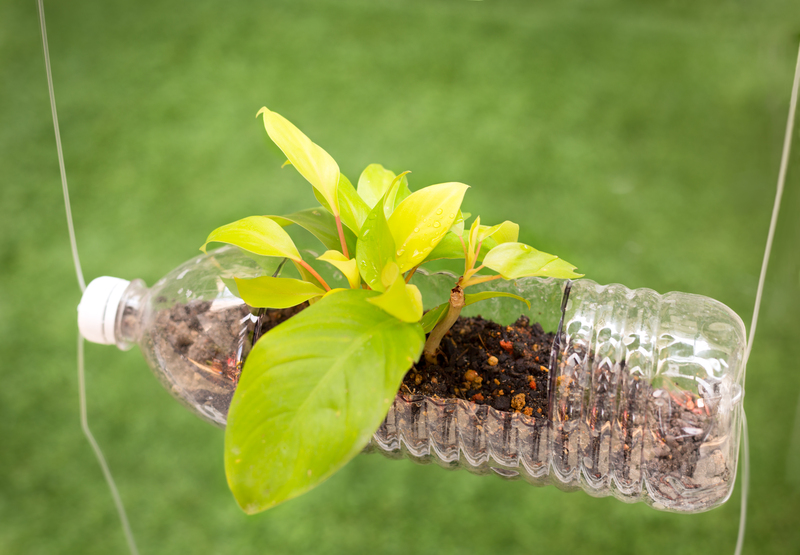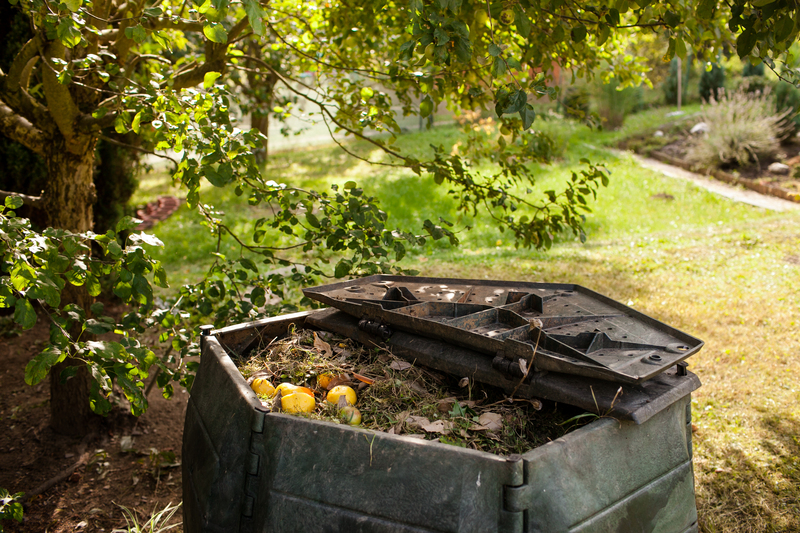The Best Way to Sort and Prepare Pots and Pans for Recycling
Recycling is essential for a sustainable future, but when it comes to household items like pots and pans, many people are unsure about what to do. These kitchen essentials eventually wear out or get replaced, and responsible disposal is crucial. In this comprehensive guide, we'll explore how to sort and prepare pots and pans for recycling efficiently and responsibly. Discover the best strategies, current practices, and eco-friendly tips to ensure your cookware doesn't contribute to landfill waste.
Why Recycle Pots and Pans?
Many individuals are unaware that most types of cookware are actually recyclable. Throwing old pots and pans in the trash adds to environmental strain, whereas recycling conserves valuable resources and reduces landfill use. Here are some key reasons to recycle cookware:
- Reduces landfill waste
- Saves energy and resources during metal production
- Minimizes environmental pollution
- Promotes a circular economy by repurposing raw materials
It's not just about decluttering--it's about contributing to a greener planet.

Types of Pots and Pans that Can Be Recycled
Before diving into the best techniques for sorting and preparing cookware, it's important to understand what kinds of pots and pans can go into the recycling stream. Most household cookware is made from metals like aluminum, stainless steel, or cast iron. Some also have coatings like non-stick or are constructed with handles of different materials. Here are the main categories:
- Stainless Steel Cookware: Resists rust and is recyclable where scrap metal is accepted.
- Aluminum Pots and Pans: Lightweight and commonly accepted at recycling centers.
- Cast Iron Cookware: Heavy, durable, and recyclable with other scrap metals.
- Copper Cookware: Holds value as scrap metal and should be recycled properly.
- Non-stick or Teflon-Coated Cookware: Needs special attention due to coating materials.
- Mixed Material Cookware: Pans with plastic or wooden handles, glass lids, or rubberized parts.
Items That Usually Cannot Be Recycled
While metal components can often be recycled, some materials present restrictions. These include:
- Cookware with ceramic or glass coatings that are fused with the metal
- Pots and pans with excessive plastic or rubber elements
- Items with electrical components (like plug-in skillets)
How to Sort Pots and Pans for Recycling
Sorting your cookware is a crucial first step. This process maximizes the efficiency of recycling and reduces the burden on recycling facilities. Here's the most effective way to sort pots and pans for recycling:
1. Separate by Material
Start by sorting your pots and pans according to the primary material--aluminum, stainless steel, cast iron, copper, or mixed materials. Most recycling centers accept metals, but policies can vary, so check what's allowed locally.
2. Remove Non-Metal Parts
If possible, detach any plastic, rubber, or wooden handles, knobs, or non-metal accessories. These cannot usually be recycled with metals and may contaminate the scrap batch.
- Unscrew or pry off detachable handles
- Remove glass lids or separate glass inserts
- Discard in appropriate waste or recycle streams (e.g., plastic recycling)
3. Identify Special Coatings
Non-stick coatings and enamel can pose problems at recycling centers. Some facilities will only take plain metal, while others may handle coatings. If you're unsure, ask your local recycling facility or municipality.
- Set aside non-stick or teflon-coated pans
- Contact your recycling provider for handling instructions
Preparation Steps Before Recycling Cookware
Proper preparation improves recycling efficiency and ensures safety. Below are the steps you should follow to optimally prepare your pots and pans for recycling:
1. Clean Thoroughly
Rinse all cookware to remove grease, oil, or food residue. While most centers can handle minor grime, heavily soiled items might be rejected.
- Wash and dry each piece
- Scrape off stubborn debris (be careful with hazardous coatings)
2. Remove Labels or Stickers
Unless otherwise specified, remove paper labels or adhesives. These can disrupt the recycling process for certain metals.
3. Disassemble When Possible
Disassemble pots and pans as much as possible. For example, separate metal lids, screws, and handles from the main vessel, and place them in the relevant recycling category.
4. Don't Crush or Flatten
Unlike cans, metal cookware doesn't necessarily need to be crushed. In fact, recycling centers often prefer intact items for effective processing.
Where to Take Pots and Pans for Recycling
The next step is finding the right location to drop off your sorted and prepped cookware. Here are your main options:
- Scrap Metal Recycling Centers: Most local scrap yards accept kitchenware made from steel, aluminum, copper, or cast iron.
- Municipal Recycling Programs: Some curbside or drop-off programs accept cookware, especially if they include bulky item collections.
- Special Collection Events: Many cities hold periodic recycling drives for household items.
- Household Hazardous Waste Facilities: Check if your local facility handles pots and pans, especially if they're coated with non-stick chemicals.
Tips for Locating a Recycling Facility
- Use online directories to find metal recycling programs near you
- Check your municipality's website for accepted materials
- Contact your waste management provider and ask about large kitchen item recycling
Sustainable Alternatives: Donation, Repurposing, and Resale
Not all old pots and pans are destined for the recycling center. If your cookware is still in usable condition, consider these sustainable options first:
- Donate to shelters, community kitchens, or thrift stores
- Upcycle or repurpose into planters, storage containers, or craft projects
- Sell online via secondhand marketplaces
*Giving cookware a second life is even more eco-friendly than recycling!*
Common Mistakes to Avoid When Recycling Pots and Pans
Understanding the dos and don'ts is essential for successful recycling. Here are frequent errors to avoid:
- Mixing materials (e.g., plastic and metal together) in a single load
- Including electrical cookware which can't be processed as scrap metal
- Dropping off cookware with food residue or grease
- Trying to recycle ceramic or glass cookware with metals
- Placing coated (non-stick) cookware in metal recycling bins without approval

Frequently Asked Questions About Recycling Cookware
Can I place pots and pans in regular curbside recycling?
In most cities, curbside recycling bins are not designed for heavy or bulky metals like cookware. Placing them there may lead to contamination or injury for workers. Use a scrap metal facility or special bulky recycling day instead.
How do I tell if my pots and pans are recyclable?
If your cookware is primarily made of aluminum, stainless steel, cast iron, or copper, it's likely recyclable through a metal recycling stream. Remove any mixed materials like wooden handles or non-metal accessories first.
What should I do with non-stick pans?
Non-stick coatings, particularly Teflon or PTFE, can complicate recycling. Some centers accept them if the coating is minimal or removed, but others do not. Contact your recycler for specific instructions.
Can I recycle pots and pans with attached plastic or wood parts?
Mixed-material items are generally discouraged. Remove all non-metal parts to streamline processing. If you can't, disclose to your recycling center what's included--they may have special handling solutions.
Does recycling cookware save energy?
Absolutely! Recycling metal cookware requires significantly less energy than producing new metal from ore. For example, recycling aluminum saves up to 95% of the energy compared to using virgin materials.
Conclusion: Make Cookware Recycling Part of Your Green Routine
Sorting and preparing your pots and pans for recycling doesn't have to be complicated. By following the guidelines in this article, you can ensure your old cookware is handled responsibly and efficiently. Remember to sort by material, remove non-metal parts, clean thoroughly, and contact your local recycler before dropping items off.
When in doubt, seek alternatives like donation or upcycling. Every responsible action you take moves us a step closer to a cleaner, more sustainable environment. Embrace the best methods for recycling cookware and set an example for eco-friendly living in your community!



